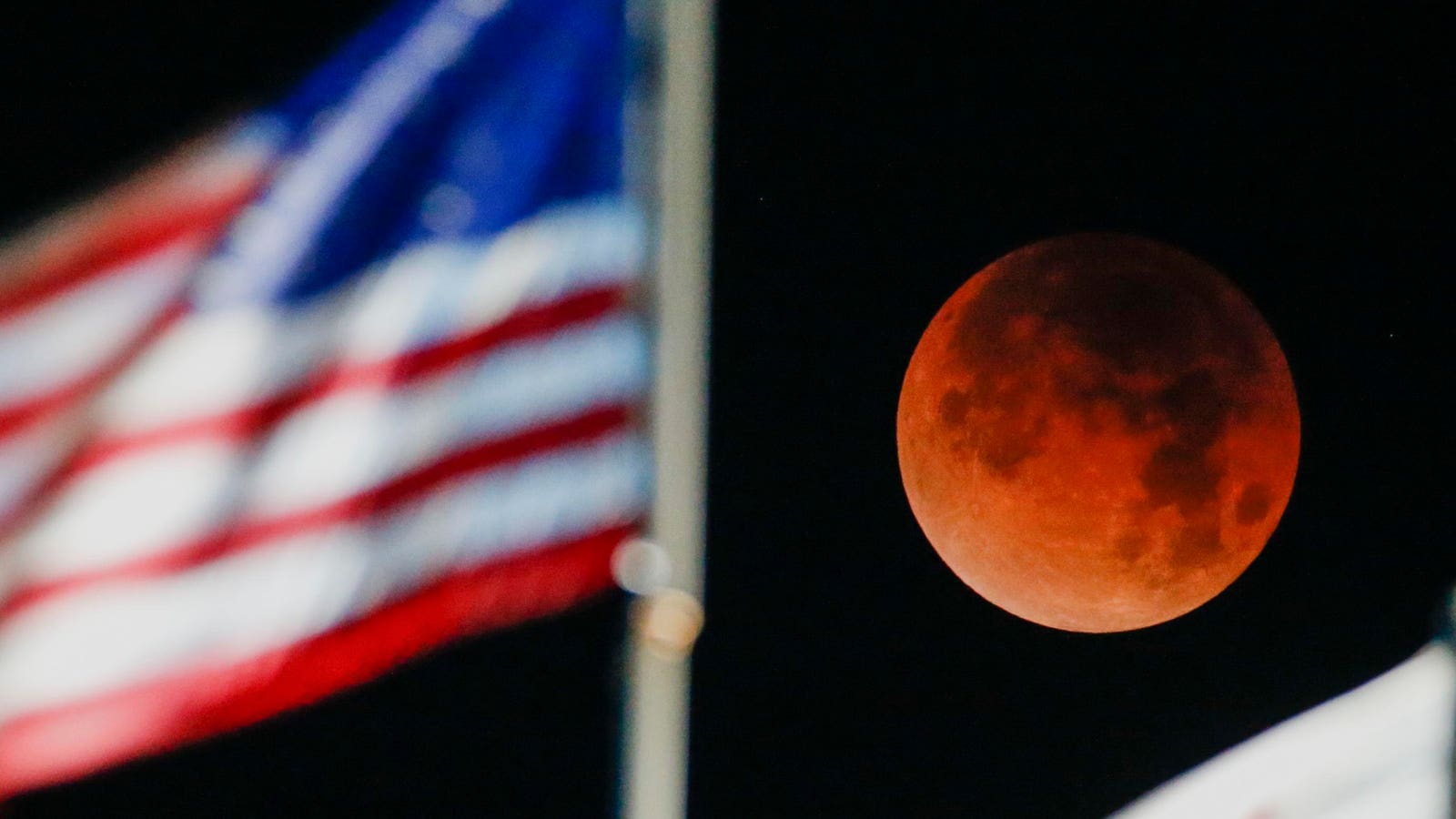
The upcoming total lunar eclipse, the first visible from North America since 2022, is set to take place on March 13-14, 2025. (AP Photo/Ringo H.W. Chiu)
Associated Press
Mark your calendars for the exciting “blood moon” total lunar eclipse event! The countdown has officially started, coinciding with the rise of February’s full moon.
On the evening of Wednesday, February 12, 2025, look towards the eastern sky at moonrise to witness the captivating “Snow Moon,” which will glow in a soft orange hue. While this will be a stunning sight on its own, the subsequent full moon in March is anticipated to be even more breathtaking.
The first total lunar eclipse visible from North America will occur on March 14, 2025, exactly two years, four months, and six days following the last one on November 7, 2022.
Here’s all you need to know about this special celestial event happening in less than a month:
What Is a ‘Blood Moon’ Total Lunar Eclipse?
A ‘blood moon’ occurs when a full moon moves into Earth’s shadow, showing Earth positioned between the sun and the moon. Since moonlight is merely reflected sunlight, the moon’s brightness diminishes as Earth blocks the sunlight from reaching it.
During the height of the eclipse, the only illumination reaching the moon’s surface is that which is filtered through Earth’s atmosphere. This process causes shorter wavelengths of blue light to scatter, allowing predominantly longer wavelengths of reddish light to reflect off the moon. As a result, the moon takes on a “blood” red hue (though it often appears more pinkish or orange) for a duration ranging from moments to about 100 minutes.
An animated map illustrates the regions where the lunar eclipse on March 13-14, 2025, will be visible. Contours indicate the edges … [+]
NASA’s Scientific Visualization Studio
When to See the ‘Blood Moon’ Total Lunar Eclipse?
The “Worm Moon” of March will reach fullness at 2:56 a.m. EST on Friday, March 14, 2025, coinciding with the third and final full moon of winter in the Northern Hemisphere. Shortly thereafter, it will journey through Earth’s central umbral shadow.
The entire eclipse event will unfold as the moon first enters Earth’s penumbra (its outer, lighter shadow), followed by a partial eclipse, and culminating in totality when the entire lunar surface is engulfed in Earth’s umbra. This sequence will occur between 03:57 and 10:00 UTC on Friday, March 14, 2025, with totality spanning from 06:26 to 07:31 UTC, resulting in a total duration of about 65 minutes.
For those in different time zones, totality will occur from 2:26 to 3:31 a.m. EDT, 1:26 to 2:31 a.m. CDT, and 12:26 to 1:31 a.m. MDT on March 14, 2025. In the Pacific time zone, it will be from 11:26 p.m. PDT on March 13 until 12:31 a.m. on March 14, 2025, and in Alaska, it will be visible from 10:26 p.m. to 11:31 p.m. AKDT and from 8:26 p.m. to 9:31 p.m. HST on March 13, 2025.
The illustration depicts the moon moving from right to left, traversing the penumbra and umbra, while leaving behind a path marked by various stages of the eclipse.
NASA’s Scientific Visualization Studio
Is It Safe to View the ‘Blood Moon’ Total Lunar Eclipse?
Unlike solar eclipses, which require protective eyewear to block harmful UV rays during partial phases, all lunar eclipses are completely safe to observe. This is because what you’re viewing is simply the Sun’s reflected light, along with the sunlight filtered through Earth’s atmosphere during totality.
What’s Next After the ‘Blood Moon’ Total Lunar Eclipse?
Another total lunar eclipse will take place in 2025; however, it won’t be visible from North America. Scheduled for September 7-8, 2025, this event can be observed from parts of Asia and western Australia.
In this image, the sun is partially obscured by the moon during a solar eclipse on January 4, 2011, in Dinslaken, Germany. (Photo by Lars Baron/Getty Images)
Getty Images
When Will the Next Solar Eclipse Be?
Just one lunar year after North America experienced its total solar eclipse on April 8, 2024, another solar eclipse will take place on Saturday, March 29, 2025. This event will be visible from the western Northern Hemisphere, particularly in the eastern U.S. and parts of Canada, where viewers will catch sight of an eclipsed sunrise.
During this solar eclipse, as much as 94% of the sun will be obscured by the moon between 08:50 and 12:43 UTC (4:50 and 8:43 a.m. EDT), while in Europe, the event will be a subtler phenomenon, with only a 30% eclipse observable from London.
Wishing you clear skies and extraordinary experiences.









